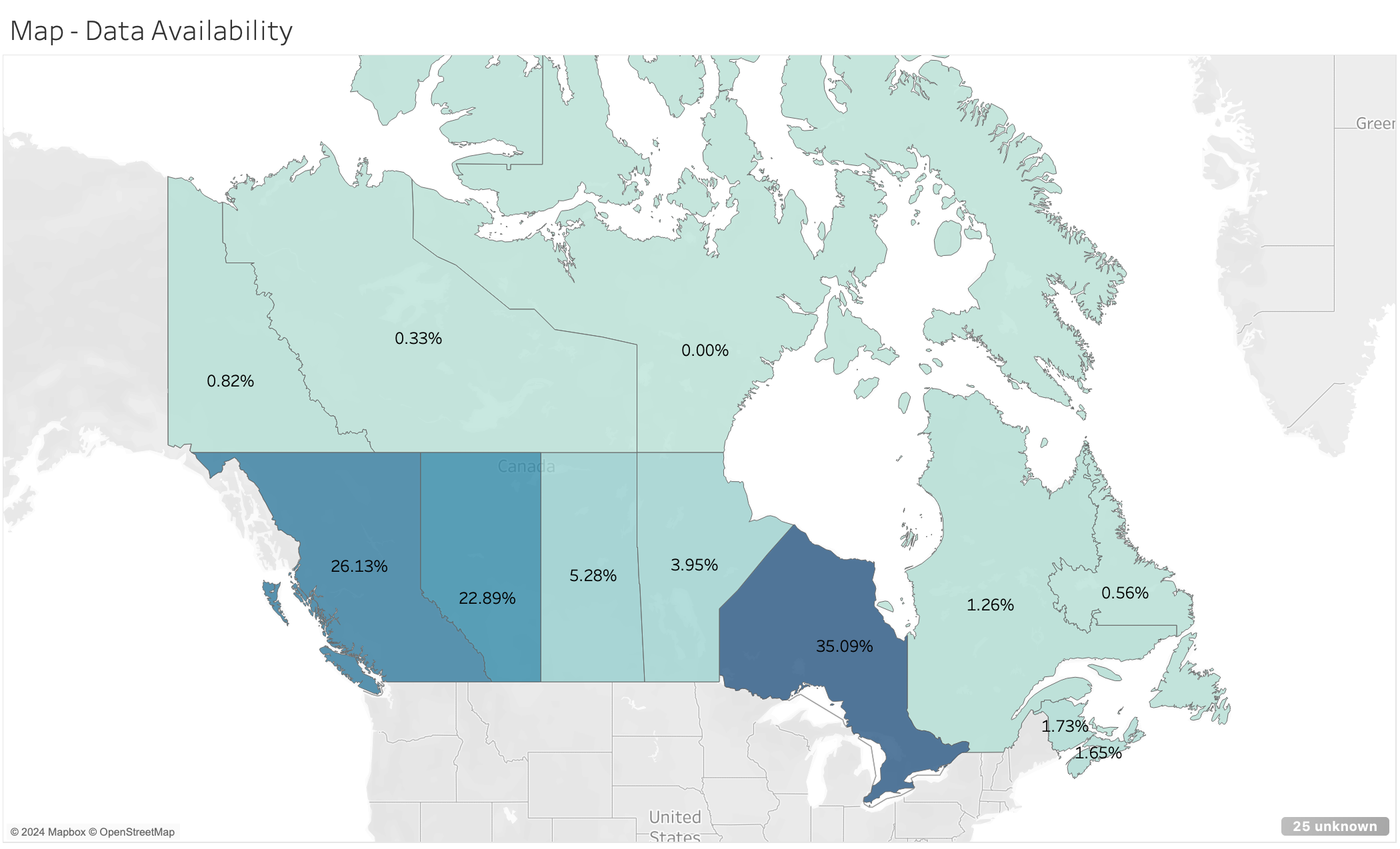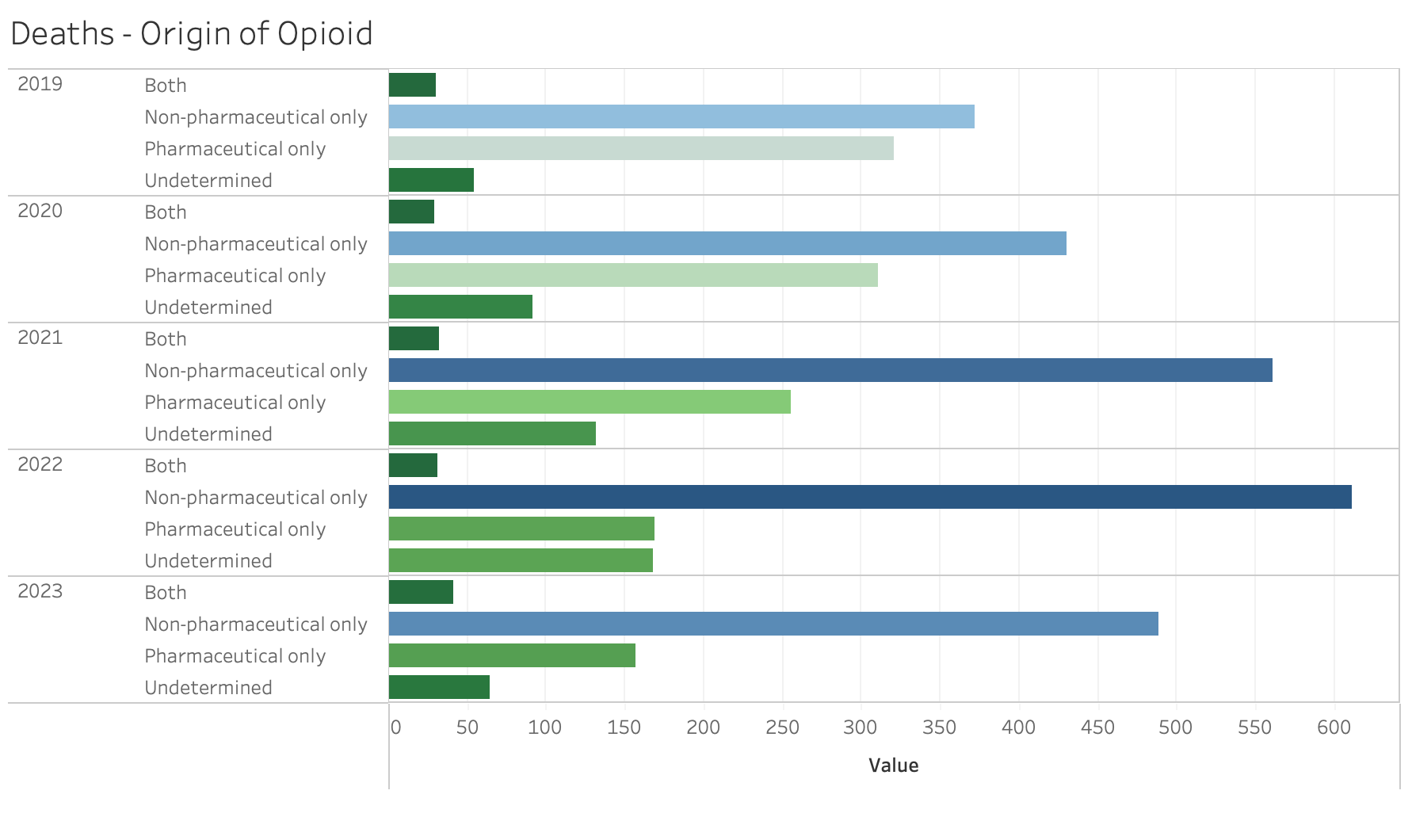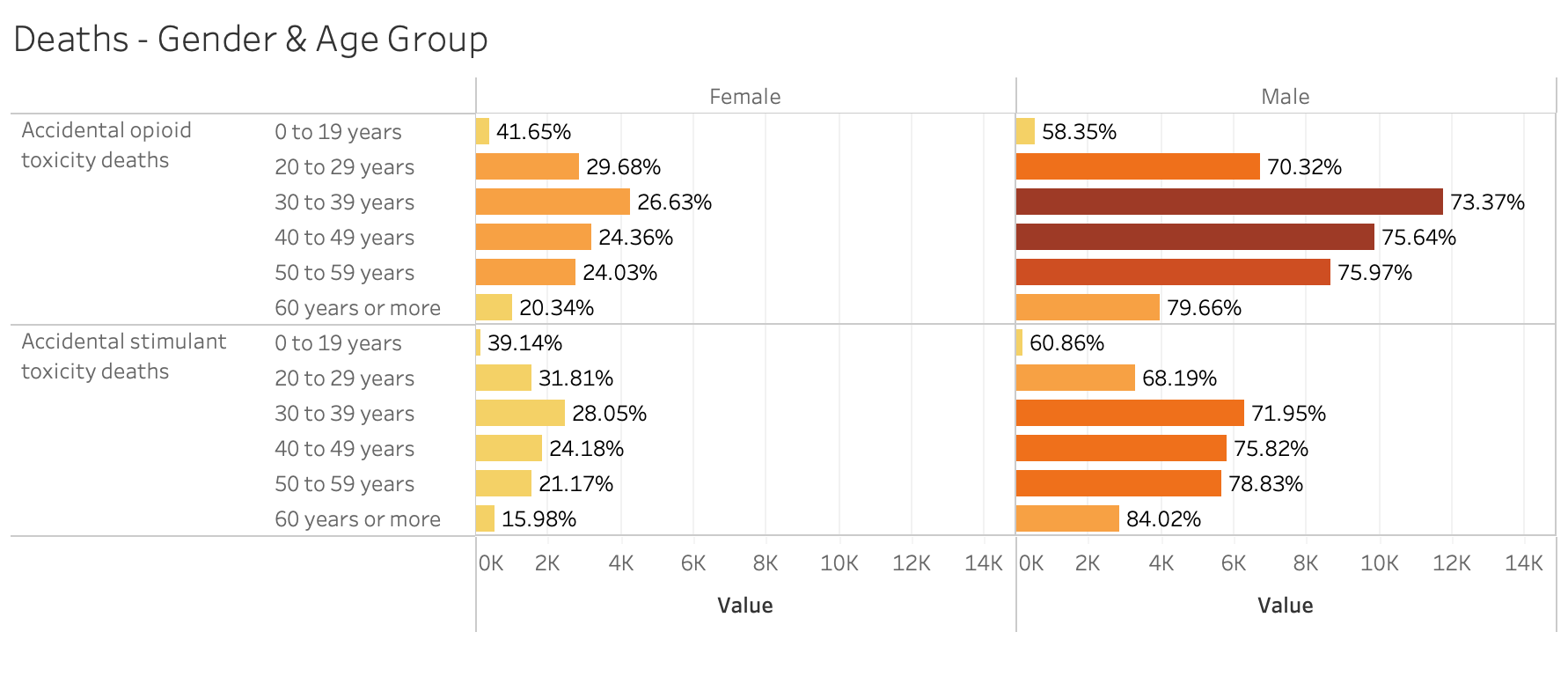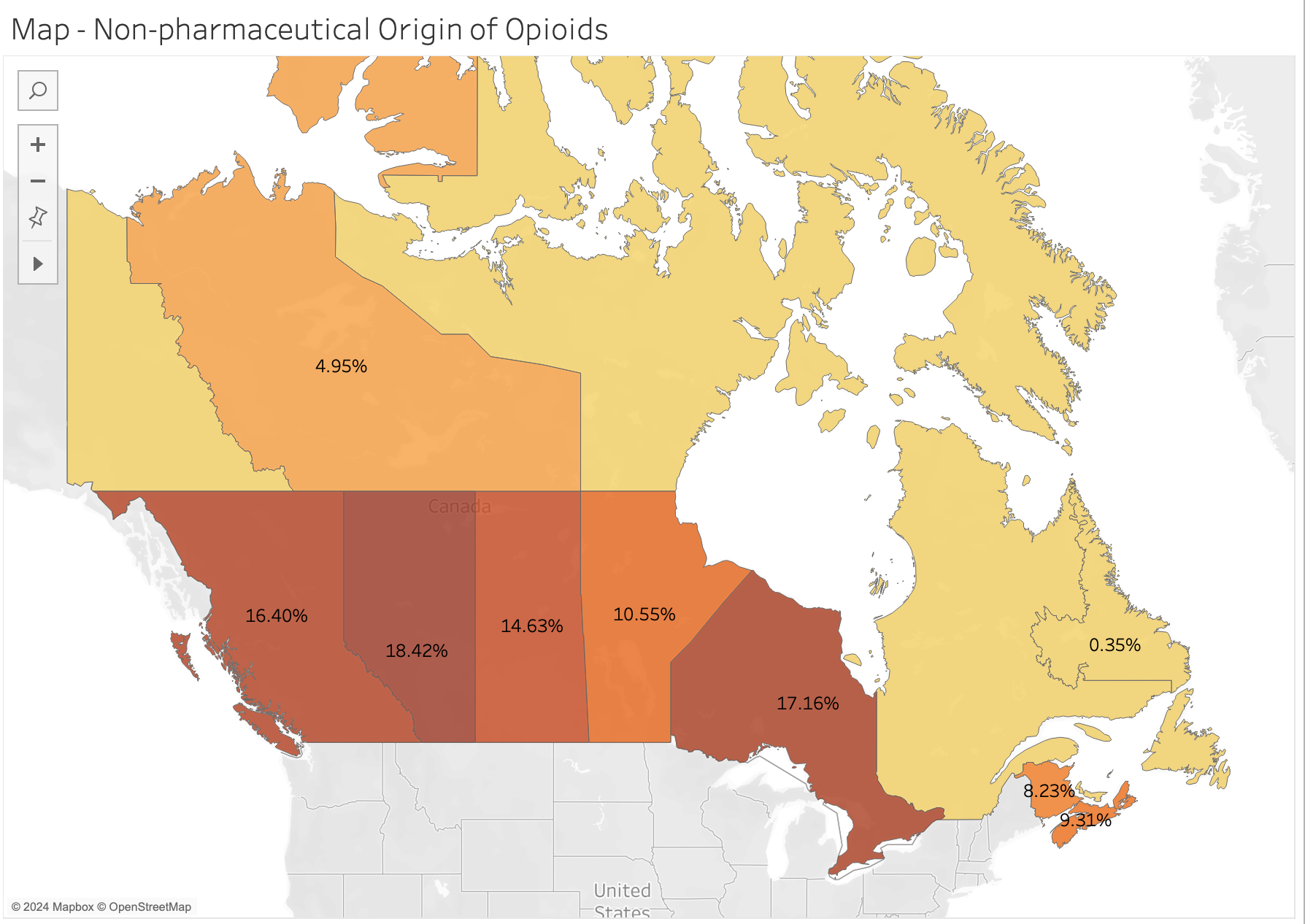Data Vizualization: International Overdose Awareness Day
 Nida Zohra
Nida Zohra
It is International Overdose Awareness Day today; which serves as a reminder of the lives lost to drug overdose and also that death due to overdose is preventable. Substances such as opioids, stimulants, alcohol, etc. are common causes of overdose related hospitalizations and deaths.
Using data published by StatsCan, I have visualized a few key aspects of the opioid and stimulant addiction epidemic in Canada:
Data Availability

To give an overview of the dataset, this map shows the data availability in each Canadian province. Most of the data for opioid and stimulant related harms are from provinces of Ontario, British Columbia and Alberta. Even though this aligns with the popular belief that drug abuse is widespread in these three provinces, the fact that there is more data available doesn’t directly indicate more drug abuse due to factors such as data suppression and inconsistent data reporting format across all provinces. Please read technical notes on the dataset here. https://health-infobase.canada.ca/substance-related-harms/opioids-stimulants/technical-notes.html
Accidental vs Suicide

Over the past 5 years, accidental deaths have increased and suicide (intentional) deaths have decreased for both opioids and stimulants.
Origin of Opioid

I analyzed the origin of opioids in accidental deaths where the opioid could have been acquired from sources that are pharmaceutical, non-pharmaceutical, both or undetermined, i.e., the origin was inconclusive. Over the past 5 years, non-pharmaceutical opioids-related toxicity deaths have increased steadily with reaching the maximum in 2022 and dropping slightly in 2023. Consequently, pharmaceutical opioids-related toxicity deaths have decreased since 2019.
Age group & Gender

The comparison of accidental deaths from (both opioids and stimulants) between female and male within all age groups shows that male victims account for at least 50% and at most 84% in each age group. It is note-worthy that the age group of 30 to 39 years is most affected by accidental toxicity deaths in both female and male gender.
Non-pharmaceutical Opioids

Alberta had the highest number of deaths amongst all provinces of Canada for accidental toxicity deaths caused by opioids acquired from non-pharmaceutical sources, followed by Ontario and British Columbia. This is consistent with the fact that “87% of accidental apparent opioid-related toxicity deaths in Canada occurred in British Columbia, Alberta and Ontario.”
*StatsCan & Dataset here: https://health-infobase.canada.ca/substance-related-harms/opioids-stimulants/
International Overdose Awareness Day: https://www.overdoseday.com/
#IOAD2024 #TogetherWeCan #EndOverdose #DataViz #DataVizualization #Tableau
Subscribe to my newsletter
Read articles from Nida Zohra directly inside your inbox. Subscribe to the newsletter, and don't miss out.
Written by

Nida Zohra
Nida Zohra
I am a data science professional interested in discussing how data can drive strategy and decision-making. I am also actively involved with the local community to uncover and solve issues using technology.